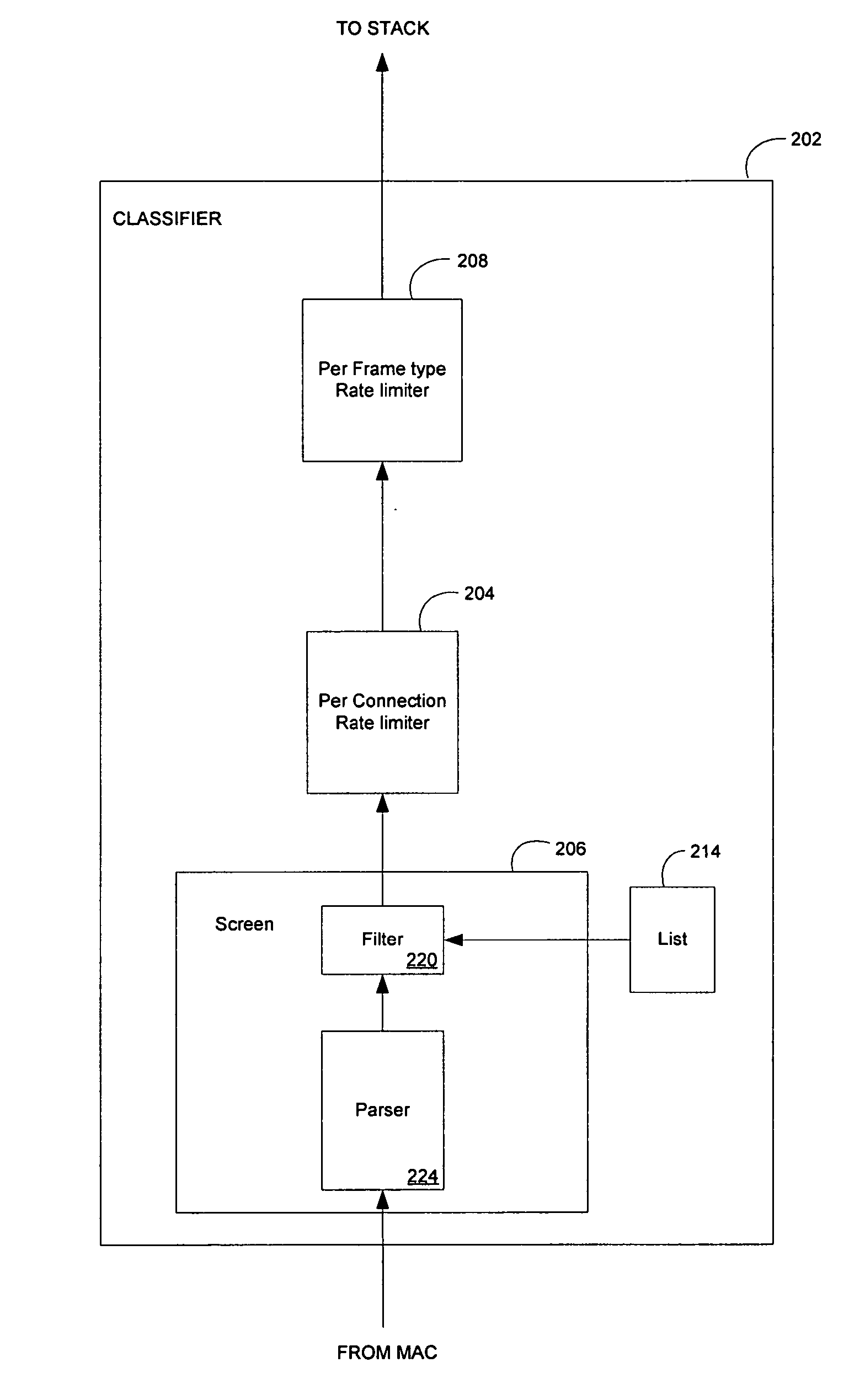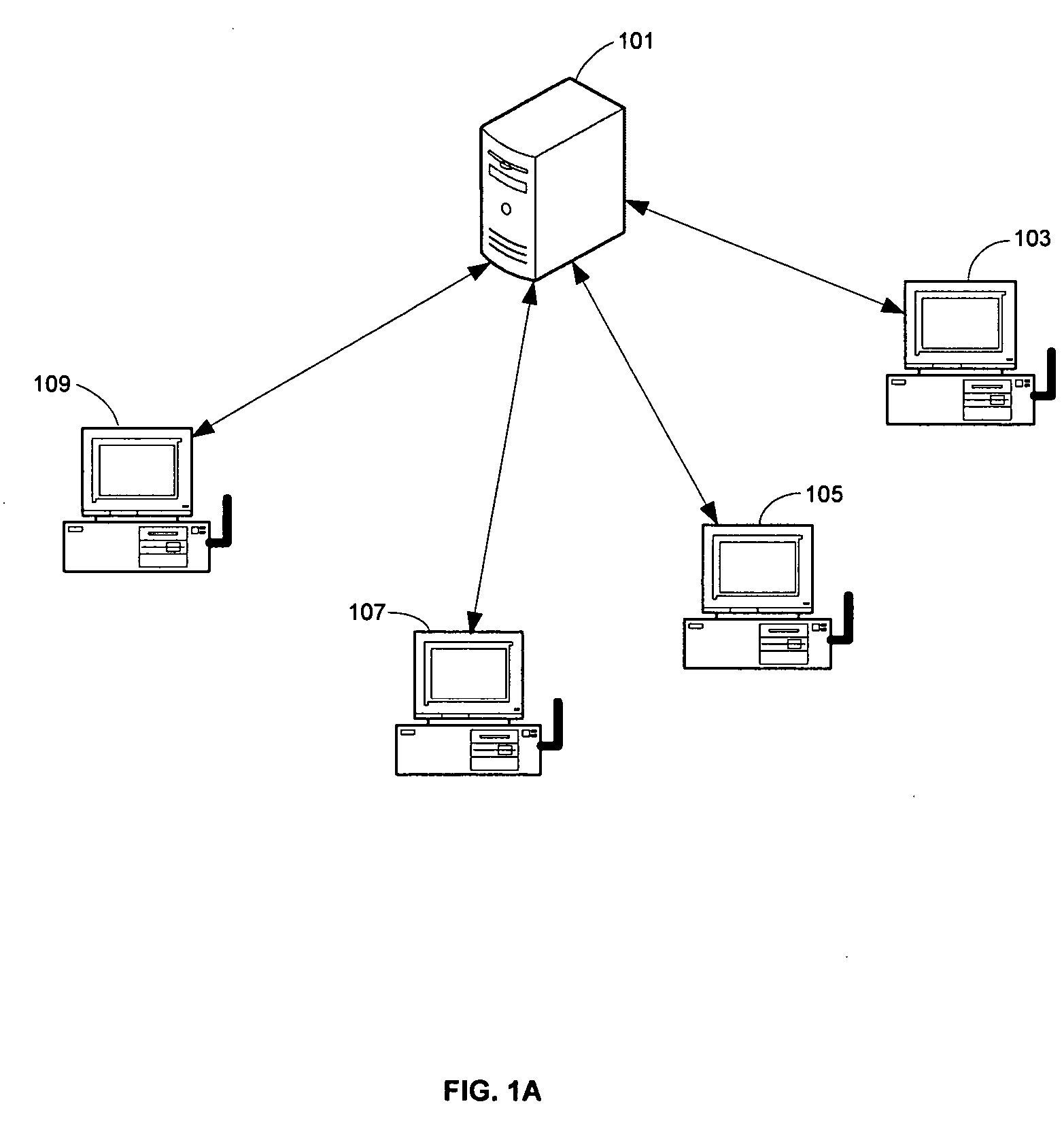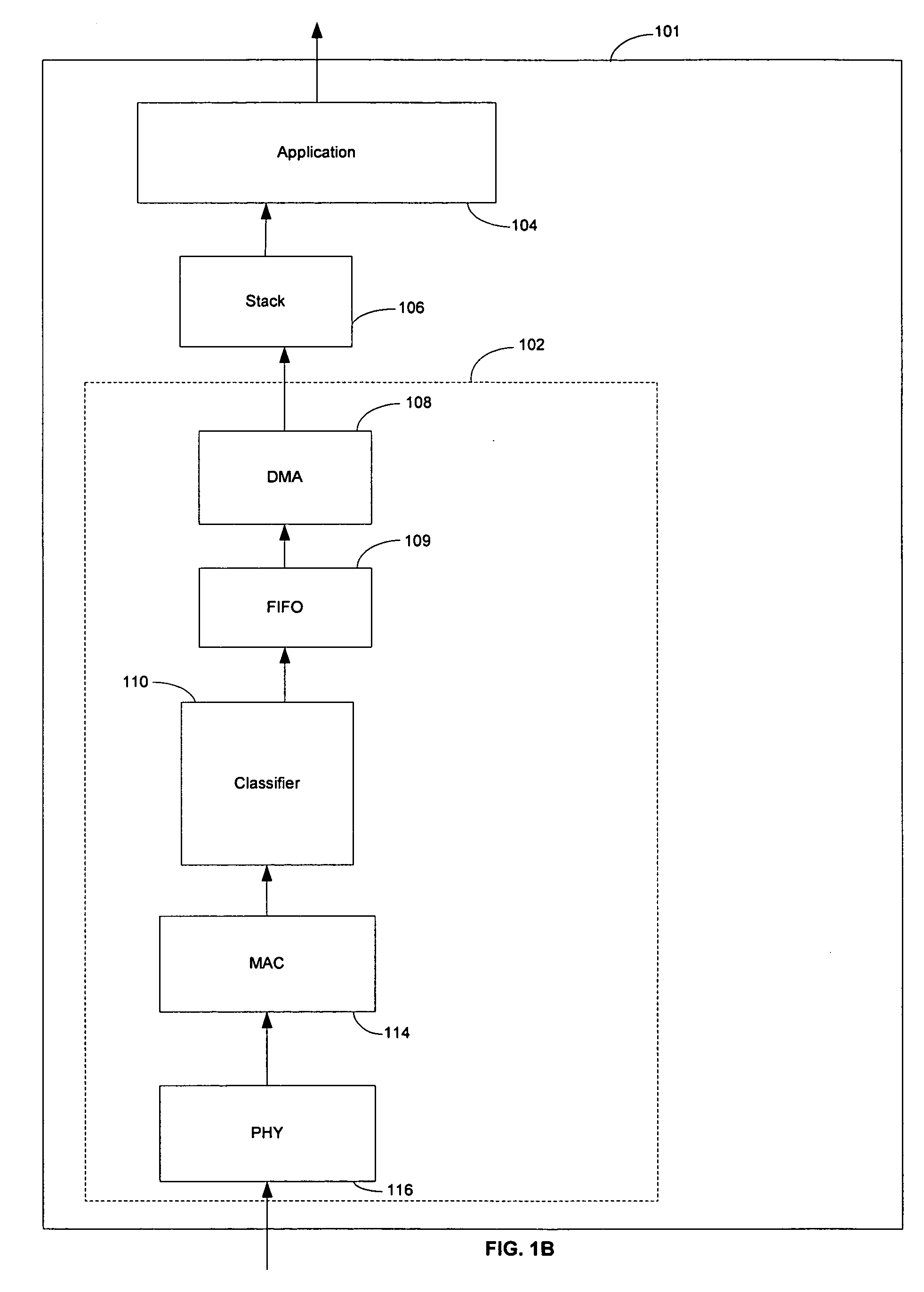Method and system for mitigating denial of service in a communication network
a communication network and denial of service technology, applied in the field of communication networks, can solve problems such as denial of service attacks, illegitimate clients may consume server resources, and new legitimate requests may be denied, so as to achieve the effect of reducing the number of denials of servi
- Summary
- Abstract
- Description
- Claims
- Application Information
AI Technical Summary
Benefits of technology
Problems solved by technology
Method used
Image
Examples
Embodiment Construction
[0025] Certain aspects of a method and system for mitigating denial of service may comprise determining whether at least a first connection identifier of a received incoming packet matches at least a second connection identifier stored in memory. A screening mechanism and a rate limiting mechanism may be utilized to regulate the received incoming packet based on determining whether at least the first connection identifier of the received incoming packet matches at least the second connection identifier stored in memory.
[0026] A connection Identifier comprising some of the address fields of a particular frame may be used to associate a received frame with a connection for classification and handling. A policy or a history may suggest that frames that belong to a particular connection identifier may be accepted or rejected as a suspected attack. Address fields that are part of a connection identifier may be an Ethernet MAC address, 802.1 fields, Ethernet frame type, layer 3 addresses...
PUM
 Login to View More
Login to View More Abstract
Description
Claims
Application Information
 Login to View More
Login to View More - R&D
- Intellectual Property
- Life Sciences
- Materials
- Tech Scout
- Unparalleled Data Quality
- Higher Quality Content
- 60% Fewer Hallucinations
Browse by: Latest US Patents, China's latest patents, Technical Efficacy Thesaurus, Application Domain, Technology Topic, Popular Technical Reports.
© 2025 PatSnap. All rights reserved.Legal|Privacy policy|Modern Slavery Act Transparency Statement|Sitemap|About US| Contact US: help@patsnap.com



